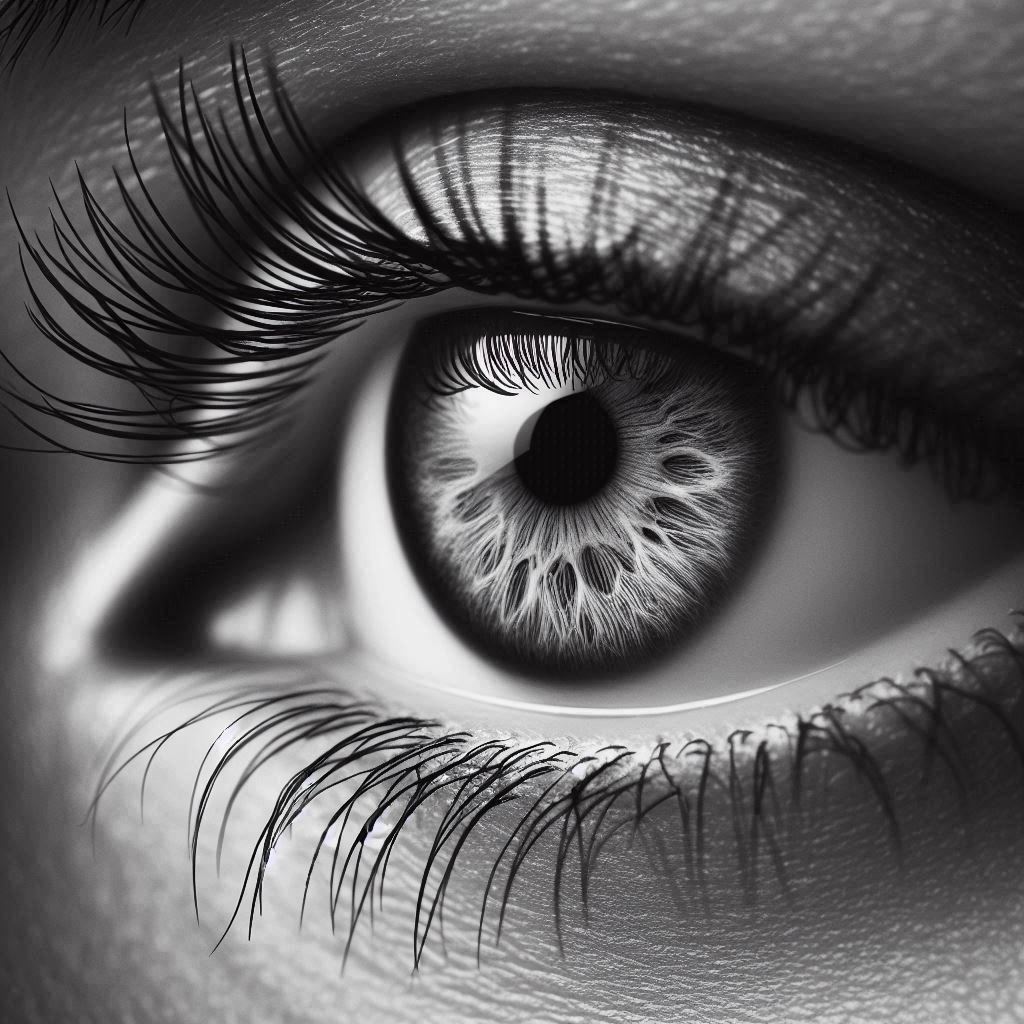Imagine waking up one day and finding no joy in the things you used to love. This numbing backdrop is a reality for people experiencing anhedonia—a condition that saps pleasure from daily activities and drastically disrupts emotional connections. Anhedonia goes beyond the typical blues; its far-reaching tentacles can affect romantic relationships, making intimacy and affection feel unattainable.
This post dives into how anhedonia intertwines with relationships, challenging the very foundation of love and connection. From the emotional distance it creates to the strain on communication, understanding the impact of anhedonia can help couples navigate its turbulent waves. Explore how recognizing the symptoms and seeking compassionate strategies can foster resilience and intimacy in the face of emotional numbness.
What is Anhedonia?
Anhedonia is a condition where individuals lose the ability to feel pleasure in activities that they once enjoyed. It’s not just a fleeting mood but a persistent state often linked to mental health conditions like depression and anxiety. Anhedonia can severely impact one’s quality of life and personal relationships, making it essential to understand its symptoms, types, and causes.
Symptoms and Types of Anhedonia
Anhedonia manifests through a variety of symptoms which can be broadly categorized into two types: social anhedonia and physical anhedonia.
- Social Anhedonia: This type involves an absence of pleasure from social interactions. People may find it hard to appreciate conversations, gatherings, or any form of social bonding. Symptoms include:
- Disinterest in forming relationships.
- Avoidance of social activities.
- Feeling detached or isolated even when surrounded by friends or family.
- Physical Anhedonia: This type relates to experiencing a lack of pleasure from physical sensations. People with physical anhedonia might not enjoy things like eating their favorite foods or engaging in physical activities. Symptoms include:
- Diminished enjoyment from eating, exercise, or physical touch.
- Lack of response to pleasurable stimuli.
- Overall reduction in motivation to engage in activities.
Recognizing these symptoms can help in identifying the condition early, which is crucial for management and treatment.
Causes of Anhedonia
Factors contributing to anhedonia can be complex and multifaceted, stemming from biological, psychological, and environmental aspects.
- Biological Factors: Changes in brain chemistry, particularly involving neurotransmitters like dopamine and serotonin, play a critical role. Conditions such as depression and schizophrenia often showcase anhedonia as a core symptom. Research indicates that alterations in brain circuits related to reward and pleasure can lead to anhedonia.
- Psychological Factors: Mental health issues such as depression, anxiety, and PTSD are closely linked to anhedonia. Experiences of trauma, prolonged stress, and emotional disturbances disrupt normal pleasure responses. According to Verywell Health, these psychological stresses can trigger or exacerbate anhedonia.
- Environmental Factors: Situational elements like chronic stress, socially isolating circumstances, or significant life changes contribute to anhedonia. Continuous exposure to negative environments can dull the brain’s pleasure responses, making it harder to find joy in everyday activities.
Understanding these causes can provide a comprehensive view of why anhedonia occurs, which is vital for effective treatment and management.
For a deeper dive into anhedonia, its symptoms, and treatment options, Health.com offers a broad resource.
The Impact of Anhedonia on Romantic Relationships
Anhedonia, the inability to feel pleasure, deeply impacts romantic relationships. Imagine trying to nurture a garden where one of you no longer sees the colors of the flowers or feels the warmth of the sun. This condition creates invisible walls, making it challenging for partners to maintain intimacy and connection. Below are some key areas where anhedonia affects romantic relationships.
Emotional Disconnection
Anhedonia often leads to a significant emotional disconnection between partners. When one partner is unable to experience joy or pleasure, it can feel like there is a vast emotional distance between them. This emotional numbness can cause:
- Lack of Shared Joy: Activities that used to bring both partners happiness, like date nights or shared hobbies, no longer elicit the same emotional response. Over time, the partner without anhedonia may feel isolated and frustrated.
- Difficulty in Expressing Love: Expressing love and affection requires an emotional foundation. But anhedonia can interfere with feelings of love, making it hard for the affected partner to reciprocate warm feelings, leading to misunderstandings.
Challenges in Communication
Effective communication is the heartbeat of any relationship. However, anhedonia disrupts this vital component in several ways:
- Reduced Emotional Sharing: Affected individuals may have less to share about their day or experiences because they don’t derive pleasure from these activities. This can result in fewer conversations and a breakdown in emotional intimacy.
- Increased Misunderstandings: When the affected partner does share, their disinterest or lack of enthusiasm can be misinterpreted as disinterest in the relationship itself. This can lead to arguments and feelings of neglect. You can read more about these communication challenges here.
Physical Intimacy Issues
Physical affection and intimacy form the cornerstone of many romantic relationships. Anhedonia can create barriers in this critical area as well:
- Loss of Libido: Anhedonia commonly leads to a decreased sex drive, which can be frustrating for both partners. The partner without anhedonia may feel rejected or undesired, while the affected partner struggles with feelings of inadequacy. Understanding the connection between anhedonia and libido is insightful, as discussed here.
- Detachment During Physical Contact: Even when physical intimacy occurs, it may lack the emotional warmth and connection that previously existed. Hugs, kisses, and other forms of touch might feel mechanical and disconnected, eroding the intimate bond.
Understanding the impact of anhedonia on romantic relationships requires empathy and patience. For those dealing with or supporting a partner through anhedonia, recognizing these challenges is the first step towards finding solutions and reclaiming a sense of connection.
Coping Strategies for Partners
When your partner experiences anhedonia, it can feel like navigating a relationship with hidden walls. Understanding and adopting effective strategies can help maintain the relationship’s strength despite the emotional challenges. Let’s explore some essential coping strategies.
Understanding and Patience
Being a supportive partner to someone with anhedonia requires a deep level of understanding and patience. This mental health condition can make it challenging for the affected person to respond to emotional situations as they did before. Here’s why understanding and patience are vital:
- Acknowledging the Condition: Recognize that anhedonia is an actual condition that affects your partner’s ability to feel pleasure and joy. It’s not a reflection of their feelings towards you or their commitment to the relationship.
- Being Patient with Progress: Improvement may come slowly and in small steps. Celebrate small wins and understand that setbacks will occur. Patience is key when your loved one is struggling to rediscover their emotions.
Encouraging Professional Help
It’s crucial to encourage your partner to seek professional help. Therapy and medical intervention can significantly aid in managing anhedonia:
- Suggest Therapy: Professional counseling can provide your partner with tools to handle anhedonia. Discussing therapy may be delicate, but it’s a necessary step. Healthline suggests offering encouragement over advice to reduce resistance.
- Explore Treatment Options: Psychiatrists might recommend medications or other treatments. It’s essential to support your partner in seeking these professional opinions and trying prescribed treatments even if they feel skeptical initially.
Maintaining Open Communication
Open lines of communication are the cornerstone of a healthy relationship, especially when dealing with anhedonia. Here’s how to maintain effective communication:
- Set Realistic Expectations: Discuss what you both expect from the relationship given the current situation. This helps in understanding each other’s limitations and strengths. For instance, being realistic about social outings or emotional engagements can prevent unnecessary frustrations.
- Express Yourself Clearly: Share your feelings and experiences openly. Saying “I feel” statements rather than “You don’t” statements can make conversations less accusatory and more about sharing perspectives.
- Listen Actively: When your partner speaks, listen without interrupting or immediately providing solutions. Sometimes, just listening can provide immense comfort.
Maintaining these strategies in your relationship can be challenging, but with understanding, patience, and proactive support, you can help your partner navigate through anhedonia. For a deeper understanding of anhedonia and more coping tips, Verywell Mind offers valuable insights.
Treatment and Recovery
Dealing with anhedonia can be challenging, but the journey towards recovery is possible with the right approach. Let’s explore the different ways to treat anhedonia and how these methods can help individuals reclaim their capacity for joy and improve their relationships.
Therapeutic Interventions
Several therapeutic approaches are effective in managing anhedonia, each tailored to address different aspects of this condition.
Cognitive-Behavioral Therapy (CBT): CBT is one of the most widely used treatments for anhedonia. It focuses on changing negative thought patterns that contribute to a person’s inability to feel pleasure. This therapy helps individuals identify and challenge negative beliefs and behaviors, replacing them with more positive and adaptive ways of thinking.
Interpersonal Therapy (IPT): IPT targets the social and interpersonal problems that may be contributing to anhedonia. This form of therapy helps individuals improve their communication skills and develop healthier relationships, which can in turn enhance their emotional well-being.
Other effective therapeutic approaches include:
- Acceptance and Commitment Therapy (ACT): Encourages people to accept their thoughts and feelings rather than fighting them.
- Mindfulness-Based Cognitive Therapy (MBCT): Combines cognitive therapy techniques with mindfulness strategies to help people manage their thoughts and emotions more effectively.
According to Tree House Recovery, innovative methods like ESM (Exercise, Sleep, and Nutrition) programs can also significantly benefit those with anhedonia by addressing physical health aspects that contribute to mental well-being.
Medications
Medications can play a crucial role in treating anhedonia, especially when it is associated with other mental health conditions like depression or anxiety.
Antidepressants: Selective serotonin reuptake inhibitors (SSRIs) and other types of antidepressants are commonly prescribed to help alleviate anhedonia. They work by adjusting the brain’s chemical balance, improving mood, and increasing pleasure responses.
Other Medications: For cases where typical antidepressants are not effective, other medications like agomelatine, vortioxetine, and even ketamine have shown promise. These medications can improve mood and help restore the ability to feel pleasure. Research from the National Center for Biotechnology Information (NCBI) highlights the potential of these treatments.
Transcranial Magnetic Stimulation (TMS): TMS is a non-invasive treatment that uses magnetic fields to stimulate nerve cells in the brain. It has been shown to be effective for individuals who do not respond to medication.
Lifestyle Changes
Making certain lifestyle changes can significantly help in managing and alleviating the symptoms of anhedonia. Here are several adjustments that can make a difference:
- Regular Exercise: Physical activity boosts endorphin levels, which can improve mood and enhance the ability to feel pleasure. Even simple activities like walking or cycling can have a positive impact.
- Social Engagement: Although it may be challenging, encouraging social interaction can help. Joining clubs, volunteering, or spending time with friends and family can gradually rebuild social joy.
- Healthy Diet: Nutrition affects brain function. A balanced diet rich in fruits, vegetables, lean proteins, and whole grains supports overall mental health.
- Adequate Sleep: Proper rest is crucial for emotional stability. Maintaining a regular sleep schedule helps regulate mood and energy levels.
- Mindfulness and Relaxation Techniques: Practices such as meditation, yoga, and deep-breathing exercises can help reduce stress and increase feelings of well-being.
For more detailed strategies on coping with anhedonia, you can explore resources provided by UK Rehab.
Understanding the combination of therapy, medication, and lifestyle changes can empower individuals to take control of their condition and work towards recovery. These steps not only aid mental health but also pave the way for stronger, more fulfilling relationships.
Conclusion
Understanding anhedonia’s profound impact on romantic relationships is essential for both partners navigating this challenging condition. The emotional disconnection, communication barriers, and difficulties with intimacy caused by anhedonia can strain even the strongest bonds. Recognizing these symptoms and seeking professional help are crucial steps towards managing the condition.
Reiterating the importance of empathy and patience in supporting a partner with anhedonia, it’s vital to adopt coping strategies and maintain open communication. Effective treatment, whether through therapy, medication, or lifestyle changes, can significantly improve the affected individual’s quality of life and, by extension, the relationship’s health.
Anhedonia doesn’t have to spell the end of a relationship. With understanding, professional guidance, and mutual support, couples can find resilience and foster deeper connections even amidst the challenges of this condition.








